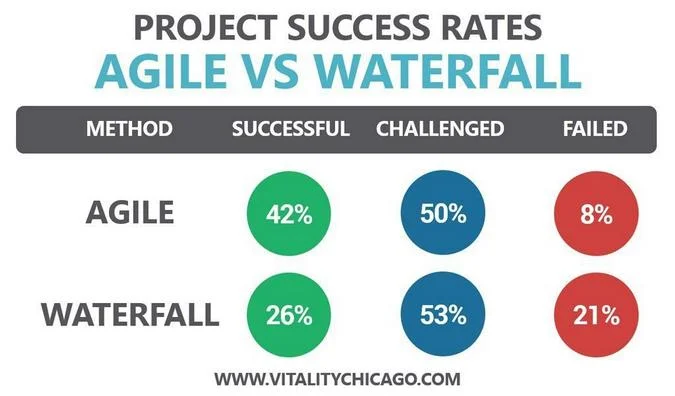Agile Layout - Improving Item Advancement for Faster Results
작성자 정보
- Dann 작성
- 작성일
본문
Introduction
Agile Design is changing the method teams create, examination, and launch products. Integrating dexterous approach with style reasoning, Agile Design supplies a flexible and repetitive approach that permits groups to respond rapidly to market changes, integrate individual comments, and continuously improve product quality. As companies progressively go for a faster time-to-market and a better individual experience, Agile Layout has actually become a valuable technique.
What is Agile Style?
At its core, Agile Design is the mix of active growth principles with user-centered layout methods. Unlike standard methods that rely upon extensive ahead of time preparation, Agile Style motivates repetitive cycles and fast responses. This framework concentrates on creating user-focused services by adjusting to feedback throughout the development process, reducing the risk of missed out on requirements or late-stage modifications. Agile Design ultimately results in an item that satisfies users' needs extra effectively.
Secret Concepts of Agile Layout
User-Centric Method: Agile Style positions individuals at the. By regularly screening and refining based upon responses, designers make certain the item lines up with real-world customer assumptions and requirements.
Cooperation: Agile Layout highlights synergy, breaking down silos and encouraging close partnership in between developers, programmers, and stakeholders. This improves communication and makes certain that each team member's understandings notify design selections.
Iterative Development: Agile Layout counts on repetitive cycles-- short, concentrated sprints of job that result in fast models and fast testing. This allows groups to identify and take care of concerns early, boosting both speed and top quality.
Flexibility: Agile Design adjusts to changing demands throughout the job. Groups prioritize flexibility, adjusting as user demands evolve or market conditions change.
Benefits of Agile Style
Agile Design provides numerous crucial advantages. It speeds up time-to-market by creating area for fast adjustments, decreases squandered sources, and reduces the risk of delivering an item that falls short of user expectations. In Addition, Agile Style cultivates a culture of flexibility, making it simpler for groups to pivot as brand-new understandings emerge.
Carrying Out Agile Design
To execute Agile Design, beginning by damaging down the layout procedure into sprints, establishing clear goals for each stage. Foster a society of cross-functional partnership by urging communication between all entailed groups. Regularly test layouts with actual customers to make certain that the item remains straightened with evolving requirements.
Combining active approach with design thinking, Agile Layout supplies an adaptable and repetitive method that enables groups to react swiftly to market changes, integrate customer feedback, and continually enhance product quality. At its core, Agile Layout is the blend of nimble growth principles with user-centered design techniques. Agile Style inevitably leads to a product that meets users' demands much more effectively.
To apply Agile Style, begin by damaging down the style process into sprints, setting clear goals for each phase.
Agile Design is changing the method teams create, examination, and launch products. Integrating dexterous approach with style reasoning, Agile Design supplies a flexible and repetitive approach that permits groups to respond rapidly to market changes, integrate individual comments, and continuously improve product quality. As companies progressively go for a faster time-to-market and a better individual experience, Agile Layout has actually become a valuable technique.
What is Agile Style?
At its core, Agile Design is the mix of active growth principles with user-centered layout methods. Unlike standard methods that rely upon extensive ahead of time preparation, Agile Style motivates repetitive cycles and fast responses. This framework concentrates on creating user-focused services by adjusting to feedback throughout the development process, reducing the risk of missed out on requirements or late-stage modifications. Agile Design ultimately results in an item that satisfies users' needs extra effectively.
Secret Concepts of Agile Layout
User-Centric Method: Agile Style positions individuals at the. By regularly screening and refining based upon responses, designers make certain the item lines up with real-world customer assumptions and requirements.
Cooperation: Agile Layout highlights synergy, breaking down silos and encouraging close partnership in between developers, programmers, and stakeholders. This improves communication and makes certain that each team member's understandings notify design selections.
Iterative Development: Agile Layout counts on repetitive cycles-- short, concentrated sprints of job that result in fast models and fast testing. This allows groups to identify and take care of concerns early, boosting both speed and top quality.
Flexibility: Agile Design adjusts to changing demands throughout the job. Groups prioritize flexibility, adjusting as user demands evolve or market conditions change.
Benefits of Agile Style
Agile Design provides numerous crucial advantages. It speeds up time-to-market by creating area for fast adjustments, decreases squandered sources, and reduces the risk of delivering an item that falls short of user expectations. In Addition, Agile Style cultivates a culture of flexibility, making it simpler for groups to pivot as brand-new understandings emerge.
Carrying Out Agile Design
To execute Agile Design, beginning by damaging down the layout procedure into sprints, establishing clear goals for each stage. Foster a society of cross-functional partnership by urging communication between all entailed groups. Regularly test layouts with actual customers to make certain that the item remains straightened with evolving requirements.
Combining active approach with design thinking, Agile Layout supplies an adaptable and repetitive method that enables groups to react swiftly to market changes, integrate customer feedback, and continually enhance product quality. At its core, Agile Layout is the blend of nimble growth principles with user-centered design techniques. Agile Style inevitably leads to a product that meets users' demands much more effectively.
To apply Agile Style, begin by damaging down the style process into sprints, setting clear goals for each phase.

관련자료
-
이전
-
다음
댓글 0
등록된 댓글이 없습니다.
